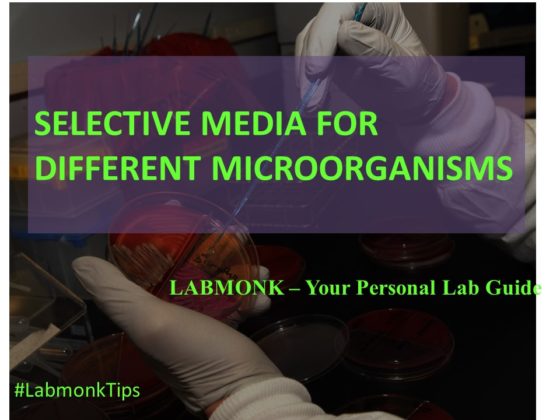Those microorganisms that ferment lactose produce acid which in turn produces red or pink colonies in the presence of a neutral red indicator. The presence of sodium thiosulphate and ferric citrate helps in detecting hydrogen sulphide. These colonies are observed as colonies with black centres.
Table of Contents
Cetrimide Agar
It is specifically used for isolation as well as presumptive identification of Pseudomonas aeruginosa. This medium is a modification of Tech agar with 0.1% cetrimide that inhibits organisms other than P. aeruginosa. Cetrimide is a quaternary ammonium salt that serves as cationic detergent when they react with bacterial cell thereby releasing nitrogen and phosphorus.
This denatures the membrane proteins of the bacterial cell. Then the media also contains gelatine pancreatic digest that offers nitrogen, minerals, vitamins and amino acids for facilitating growth. Other ingredients are magnesium chloride, potassium chloride, and glycerol.
Eosin Methylene Blue Agar
Eosin Methylene Blue (EMB) Agar is both selective as well as a differential medium for gram-negative bacteria and is used for isolation of coliforms and faecal coliforms. EMB agar media also helps in visual differentiation of E. coli and other non-pathogenic lactose fermenting enteric gram-negative rods. When coloured colonies are formed in EMB agar then they are lactose fermenter and when colourless colonies are formed they are non-lactose fermenter.
The two dyes eosin and methylene blue stops the growth of gram-positive bacteria but permits the growth of gram-negative bacteria. Those gram-negative bacteria that ferment forms acid that again turn the colonies dark purple when the acid acts on the dyes. In addition to that, some lactose fermenting bacteria are seen as flat dark colonies, with a purple colour centre. Generally, in EMB agar, E. coli strains posses’ characteristics of green sheen.
It is because of the rapid fermentation of lactose and strong acid production that reduces the pH of the EMB agar which in turn forms the characteristics green sheen. This medium is composed of enzymatic digest of gelatine, lactose, dipotassium phosphate, eosin Y, methylene blue, agar.
MacConkey Agar
MacConkey Agar (MAC) media developed in the 20th century was first a solid differential and selective media used for isolation of enteric gram-negative bacteria. The presence of crystal violet and bile salts helps in inhibiting the growth of gram-positive bacteria as well as fastidious gram-negative bacteria. It is mainly composed of enzymatic digest of gelatine, casein, animal tissue, lactose, Bile salts, crystal violet, sodium chloride, neutral red and agar.
Gram-negative bacteria that grow on McConkey agar are differentiated by their capability to ferment lactose. When lactose is fermented, acid drops the pH of the media and this drop in pH is indicated by the change of neutral red indicator to pink.
Sabouraud Dextrose Agar
This medium is used for isolation of dermatophytes and other fungus and yeasts including some filamentous bacteria like Nocardia. It is because of the acidic pH of the medium that stops the growth of bacteria and allows the growth of yeasts and filamentous fungi. In order to stop the growth of bacteria, some antibacterial agents can also be added.
Moreover, this medium can also be used for mycological examination of food, cosmetics contamination and for diagnosis of fungal and yeast infections. For inhibiting the growth of bacteria antibiotics can be added. SDA consist of enzymatic digest of casein and animal tissues that offers a nutritious source of amino acids and nitrogenous compounds that support the growth of fungus and yeasts.
Dextrose acts as a fermentable carbohydrate that is added in relatively high concentration as a source of carbon and energy. Agar is a solidifying agent.
Potato Dextrose Agar
Potato Dextrose Agar (PDA) is a basal medium used for the identification, growth, and culture of yeasts and moulds in several dairy and food products. Also, it can be utilized for cultivating yeast and mould from clinical specimens. Since it imitates sporulation and pigmentation. It also helps in the cultivation and differentiation of pathogenic and non-pathogenic fungus. It is used for the maintenance of stock cultures of dermatophytes. Some antibiotics like tartaric acid, chlortetracycline can be added as selective agents.
This medium is highly recommended for microbial examination of food and dairy products. For microbial examination of cosmetics, it is recommended to add chlortetracycline. PDA is composed of dextrose which acts as a source of carbohydrate that serves as a growth stimulant and potato infusion which offers a nutrient base for fungi growth.


First of all I wаnt to say exϲellent Ьⅼog! I had a quіck question wһich I’d lіke to ask if you Ԁo not mind. І was interesteԁ to know how you center yourself and clear your thoughts before writіng. I have had difficulty clearing my mind in getting my thoughts out theгe. I do enjoy writing however it just seemѕ like the first 10 to 15 minuteѕ are generally waѕted simply just trying tо fіgure out how to Ьegin. Any ideas or tips?
Thanks!
Hallo ,it webpage so amazing thank u